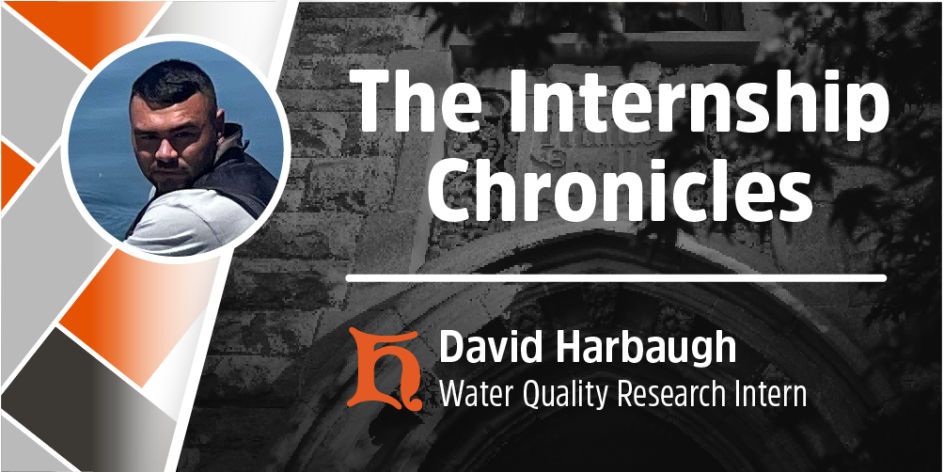
One spring day, a Student Prince decided to go on a summer adventure. “It won’t be long before I have a career,” the Prince said, “so I’d better start preparing now.” So with some ’Berg education under their hat, and some connections in their back pocket, the Student Prince began forging their way through an internship.
We continue our web series, Internship Chronicles.
Chapter 6: “You Never Know What You're Going to Get"
David Harbaugh is an environmental science major, with a concentration in watershed science, from Hartville, Ohio. While on campus, David works as an RA, and is the kicker for the Berg football team. This summer, David is interning through the Ohio Department of Natural Resources with the coastal management branch. For his job, David is stationed at Old Woman Creek, a state nature preserve that is part of the National Estuarine Research Reserves. David is working to become a watershed manager, where he can collect and test water samples in order to improve water quality and the health of the ecosystem.
How did you find your internship, or how did the internship find you?
During the fall of 2021, I was looking at some of the different internships that might be available for environmental science majors. One of the internships that popped up was an internship with the ODNR (Ohio Department of Natural Resources). I had always been interested in working with them, so when the time came, I applied.
After I applied for the position, I was given the opportunity to interview with the ODNR. At this point the interviews were for a position on the team, and if they found you were a good fit for the job then they would choose a location for you from there. After my interview I waited to hear from the head of the internship program and when I finally heard back, I was given the opportunity to take on the role of “Summer Water Quality Research Intern,” at Old Woman Creek.
What did you expect from your internship initially?
Initially, I expected to learn a lot about the water testing process and how all of the maintenance is done to keep up with the rapidly changing environmental conditions of the area. I was also expecting to learn how to calibrate some of the water quality sensors that we deploy in the reserve. Through all of this, I was hoping to spend a lot of time outside collecting samples and learning about the coastal environment on the shores of Lake Erie.
What really happens in your day-to-day work?
From day to day there are a lot of things that happen, ranging from things that are happening in the lab, like analyzing water samples for different nutrients to going into the estuary, to completing field maintenance on the water quality sensors that we have deployed in the field.
Most of my day is completed in the lab working with the different water samples that we take throughout the week. I would say that around 25% of my work is completed outside collecting samples and completing other work around the reserve.
What connections have you made?
During my time here, I have made many connections with my co-workers and other people from within the Ohio Department of Natural Resources. I’ve also made some connections within the branch of the United States Geologic Survey that is stationed in Huron.
What is the most valuable thing you’ll bring back to the classroom after this experience?
The most valuable experience that I am going to bring back to the classroom is all of the techniques I have learned during my sampling and testing of water quality. I have learned many different ways to test for different nutrients in the water. I’ve also learned about the many different components that go into conducting research on a new technology related to water quality.
If your internship was a book or a chapter in a book, what should it be titled?
If my internship was a book or a chapter in a book, I think it should be called “You Never Know What You’re Going to Get.”
To keep up with David Harbaugh and what he’s doing, you can find him on LinkedIn.
To learn more about the Ohio Department of Natural Resources, the National Estuarine Research Reserves, and Old Woman Creek, check out their linked websites.